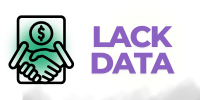If you still don’t know how to choose the right typography for your blog, you’ve come to the right place. Typography is the creation and application process to add styles, formats, and visual combinations of words.
Choosing the best typography helps you to add more homogeneity, legibility, readability, and harmony to content pieces.
Increasing blog visibility requires the best ivory coast phone number data browsing experience for the user, and that involves the ability to read what is being transmitted well. That is why typography is one of the most relevant areas of to choose graphic design.
Knowing some rules allows to choose you to create pieces of content more suitable for SEO and visual marketing strategies. In this article, we will explain some of the principles and techniques to create incredible typographic text and images. Here is everything you will see:
- What is typography?
- What is the difference between font and typeface?
- How to classify the font styles?
- What are the pillars of typographic application?
- How to choose the right typography for your blog?
- Where to find free fonts?
What is typography?
Typography is basically the printing of the fonts. As the majority of writing today is digital, which does not require the physical printing and the proper gaining control of customer engagements drawing of fonts on paper, that meaning has fallen into disuse.
Now, it refers to the entire study, creation, and application of characters, styles, formats, and visual arrangements of the words.
However, regardless of the method used to create the fonts, typography is the basis of written communication. When you choose the adequate composition, you can convey the right message for the reader with good readability.
What is the difference between font and typeface?
In typographic design projects, professionals refer to writing as font or typeface. In terms of typographic composition, the concepts are different. Typeface refers to the design, and the font is how you present it, that is, with the chosen style, size, and visual elements.
For example, Bodoni is a typographic family, but frist database Bodoni 10 pt. Bold or Bodoni 14 pt. Italic are two different fonts that belong to the same typeface.
How to classify the font styles?
There are four font styles classifications:
- Sans Serif — indicated for the most striking titles and parts in the texts.
- Serif — suitable for books and large volumes of printed text, as its design helps in the fluidity of reading without causing eye strain.
- Script — simulates handwriting.
- Dingbat — decorative fonts, consisting of different symbols in place of the letters of the alphabet.
What are the pillars of typographic application?
There are three pillars of the typographic application that can help you to create your blog’s visual identity. Here are some considerations for each of them.
Typographic measures
The character reference lines delimit the font space. Each typeface has a different one, which is known as:
- Ascending — the maximum height that the vertical projection of the fonts can reach at the top (t, l, d, for example).
- Upper case — the highest corresponding to capital letters.
- Descending — it is the line that indicates how below the centerline the letters with vertical projections can reach (g, j, p, and q, for example).
- Baseline — it is a baseline on which most fonts are written (except descending parts).
There are also measures known as leading, tracking, and kerning:
- Leading — is the distance between lines.
- Tracking — is the distance between words.
- Kerning — is the distance between characters.
Visual hierarchization
The visual hierarchy uses different sizes, families, distances, and variations from the same font and aims to highlight the information without causing visual pollution in the content.
Designers use this tactic to prioritize phrases or content or reduce their importance in texts. For example, sentences written with a larger or bold font draw more reader attention and are read first.
Graphic composition
The graphic composition is essential for the readability of the content — it is related to SEO strategy. One of its aspects is the negative space of the entire web page visual design.
Those spaces available between letters, phrases, and paragraphs help to improve the reading and, consequently, it is a requirement well regarded by search engines to improve the user’s browsing experience.
Besides that, the text alignment on the page (left, right, centered, or justified) also interferes with this requirement.
Professionals prioritize designs with the “F” format — neuromarketing tests help to identify the reader’s visual direction and attest that the reading process is done in the letter F format.
So you can fit much text in this format to ensure more understandable information. Left alignment is the best format to help with this process.
How to choose the right typography for your blog?
The font says a lot about your projects. Choosing it is an essential step in building an image that will captivate your persona.
The font choice must follow a purpose to not disturb the project. Typography causes, at first sight, a perception in readers (positive or negative) — and that is important to understand how they will judge all the remaining designs.
Thus, knowing how to choose the right typography for your blog is the best way to set the tone of the entire project to guide the reader’s feelings towards interacting with your design without distractions or visual appeals. So, before looking for a bank of free fonts, consider the following questions.
